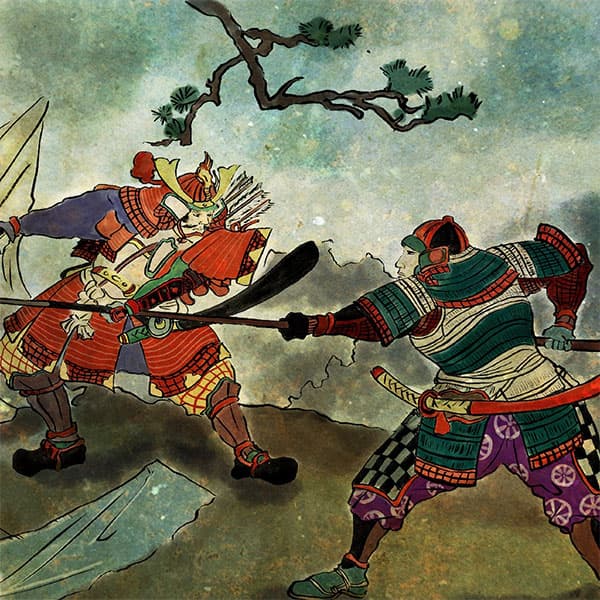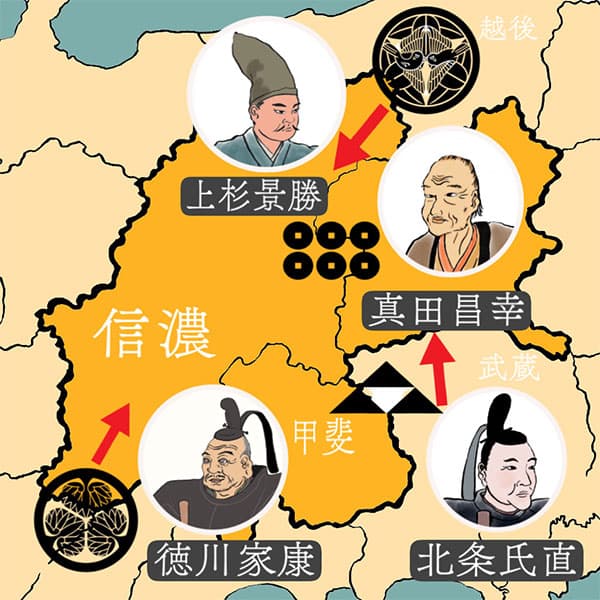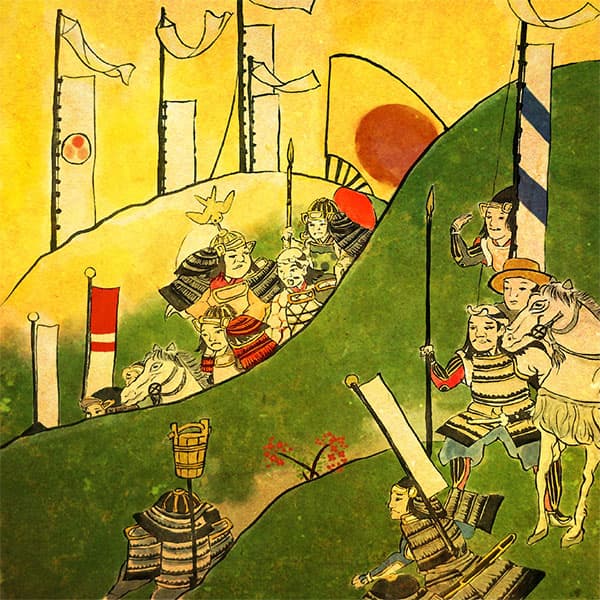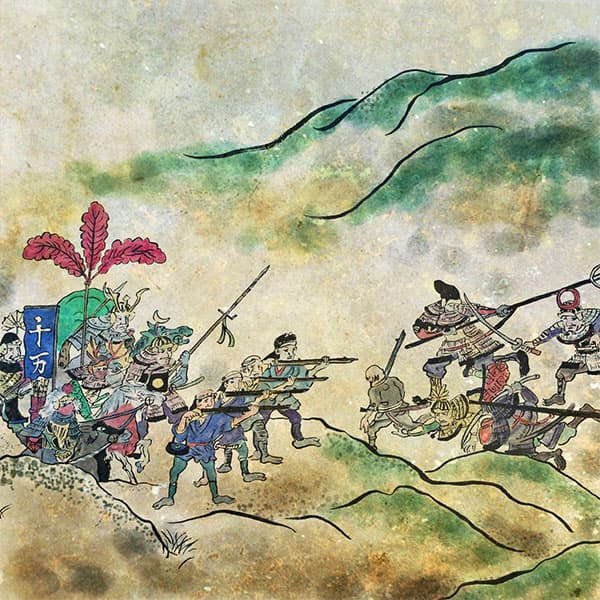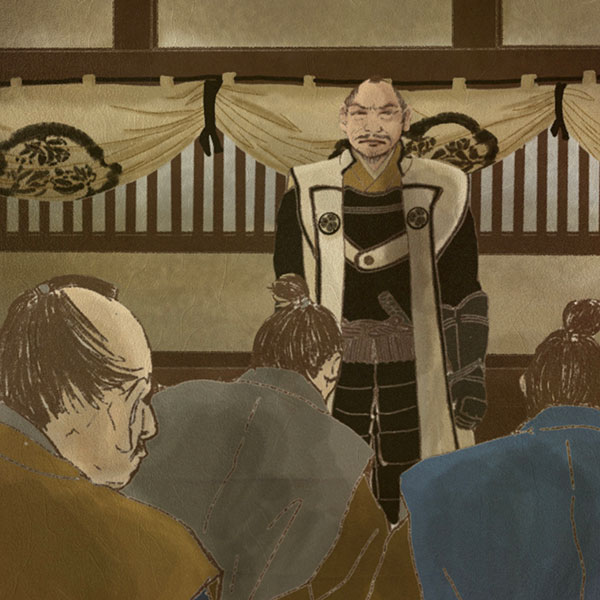Naomasa Ii (1/2)Ii's Red Demon
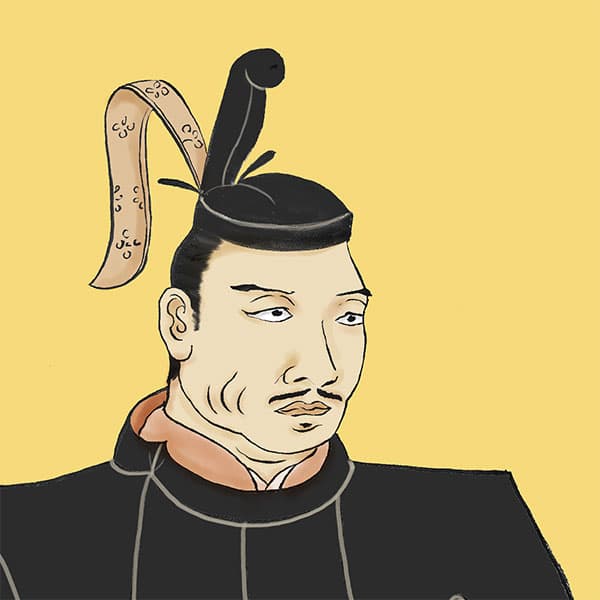
Naomasa Ii
- Article category
- biography
- name
- Ii Naomasa (1561-1602)
- place of birth
- Shizuoka Prefecture
- Related castles, temples and shrines

Hikone Castle
National treasure tower
Takasaki Castle

Odawara Castle

Minowa Castle
- related incident
The period of war, which was called the Sengoku period after the history of China, was brought to an end by Tokugawa Ieyasu. Among the vassals who helped Tokugawa Ieyasu unify the country, four particularly powerful ones are called the Tokugawa Four. One of these four heavenly kings, Ii Naomasa, laid the foundation of the Hikone clan. Ii Naomasa led an army dyed red, continued to fight at the forefront, and always helped Tokugawa Ieyasu. Today, I would like to talk about Ii Naomasa of the Tokugawa family.
Birth of Naomasa
Naomasa Ii was born in 1561 as the eldest son of Naochika Ii, who belonged to the Imagawa family.
For generations, the Ii clan was the local feudal lord of Iitani, Totomi Province (currently Iitani, Inasa-cho, Kita-ku, Hamamatsu-shi, Shizuoka Prefecture). In the year Naomasa was born, there was a battle between Oda Nobunaga and Imagawa Yoshimoto (Battle of Okehazama) in Owari Province, and the head of the Ii family, Ii Naomori, was killed in this battle.
Yoshimoto Imagawa, the head of the Imagawa family that the Ii family served, was also killed. Therefore, Yoshimoto's son, Ujima Imagawa, became the new head of the Imagawa family and began to rule the Tokai region.
However, the following year, when Naochika Ii, Naomasa's father, was murdered on suspicion of rebellion, Naomasa's life was in danger even when he was only two years old. Naomasa was saved by the petition of Chikunori Niino, a vassal of the Imagawa family, and Naomasa was raised under Chikunori. However, that relative also died in battle.
Also, in 1568, when the Takeda family of Kai Province threatened the Imagawa family, Ujimasa Imagawa, who was in a disadvantageous position, plotted to annex the territory of the Ii family by killing Naomasa. Those around Naomasa, whose life was in danger, overcame the crisis by forcing him to become a priest.
In this way, the Imagawa family, which the Ii family served, was invaded by the Tokugawa family from the west and the Takeda family from the east, and was destroyed.
In the second year of Tensho (1574), Naomasa returned from being a monk to a samurai by returning to secular life, and began serving the Tokugawa family in Mikawa Province. At this time, she began to call herself Machiyo Ii. Naomasa, who was assigned to serve the Tokugawa family, was appointed as a page to Tokugawa Ieyasu and spent time close to Ieyasu.
As a vassal of Ieyasu
Ii Naomasa served Tokugawa Ieyasu as a page and participated in many battles. In particular, he achieved great military success in the conflict with the Takeda family, including participating in the Battle of Takatenjin Castle.
In 1582, at the age of 22, he celebrated his Genpuku (genpuku) and took the name Naomasa Ii.
However, in the same year, Oda Nobunaga committed suicide during the Honnoji Incident. At this time, Tokugawa Ieyasu went to Kyoto to greet Oda Nobunaga and was staying in Sakai. Ieyasu and his vassals crossed the pathless road from Sakai to Mikawa Province and returned home. Tokugawa Ieyasu crossed Iga.
Naomasa was also in this group and fought against the fallen warriors. Naomasa's work was astounding to those around him, and he was rewarded with a tabard made of peacock feathers from Ieyasu.
This Jinbaori is said to be kept at the Folklore Museum in Yaita, Niigata Prefecture.
In this way, Ieyasu and his party, who were facing a crisis, were able to safely return to Mikawa Province.
Ii's Red Preparedness
The Takeda family of Kai and Shinano provinces collapsed, and the Oda family, which ruled after that, also collapsed due to the Honnoji Incident.
In this way, Kai Province and Shinano Province became blank areas with no one to rule them.
When Tokugawa Ieyasu crossed Iga and returned to Mikawa Province, he invaded the Chubu region and annexed it (Tensho Migo War).
Ieyasu, who came to rule this region, entrusted 120 surviving former vassals of the Takeda family and some of the direct retainers under Ieyasu to Naomasa Ii.
Naomasa compared himself to the Takeda family and had all his equipment in red, which came to be known as ``Ii's Red Arms''. This military uniform of the Ii family continued until the end of the Edo period.
Naomasa Ii was strict with others and strict with himself, so some of his servants left the Ii family. Ieyasu, who had high hopes for Naomasa, directly assigned him to the Ii family.
If Ieyasu, the lord, interfered with the assignment, the servants would no longer be able to rebel against direct government. It was Ieyasu's intention to include former vassals of the Takeda family, and it is said that he wanted to make Naomasa a general.
In 1583, Naomasa Ii adopted Hana (later known as Tobaiin), the daughter of Yasuchika Matsudaira (soryo of the Mikawa Matsui family), as Ieyasu's adopted daughter and married her.
At the Battle of Komaki and Nagakute in Tensho 12 (1584), Naomasa led his vassals of the Ii clan, who had become red-armed, into battle for the first time.
Naomasa had the innocent look of a boy, but his fearless figure, clad in red armor with demon horns on his helmet, earned him the nickname ``Ii's Red Demon'' and was feared. .
Relocation to Kanto and Takasaki Castle
Around the time when Oda Nobunaga committed suicide during the Honnoji Incident and Ieyasu was annexing the vacant Shinshu, the future Toyotomi Hideyoshi (at this time still Hashiba Hideyoshi) rose to prominence in the Kinki region. Hideyoshi quickly expanded his power and began to fight with Tokugawa Ieyasu. The Battle of Komaki Nagakute.
The Battle of Komaki-Nagakute, fought between Ieyasu and Hideyoshi, dragged on for a long time.
Hideyoshi, who did not want the situation to last too long, sent his sister and mother as hostages to convince Ieyasu to submit to him.
It is said that when Hideyoshi's mother, Omandokoro, and her maid came to visit Ieyasu, they were impressed by Ii Naomasa's dignified warrior style and courteous hospitality, and fell in love with him.
Thus, in 1586, Ieyasu went to Kyoto and became a vassal to Hideyoshi. It is said that Hideyoshi, upon hearing of Ii Naomasa's reputation, highly praised him, appointed him to the rank of Junior Fifth Rank, and gave him the surname Toyotomi.
Also, by visiting the Toyotomi family, Naomasa had contact with many feudal lords.
At this time, Takakage Kobayakawa, a feudal lord in the Chugoku region, praised Naomasa as having the ability to govern the nation's politics.
In 1590, the Toyotomi clan attacked the Hojo clan in the Kanto region. The Tokugawa family joined the Toyotomi family in their campaign, and during this conquest of Odawara, he made his name known as the only military commander among the numerous military commanders who launched a night attack and invaded Odawara Castle.
Immediately after the Odawara conquest, Toyotomi Hideyoshi transferred Tokugawa Ieyasu from the Tokai region to the Kanto region.
In this transfer to Kanto, Ieyasu gave Naomasa Ii 120,000 koku of Minowa, Ueno Province (present-day Takasaki City, Gunma Prefecture). Minowa was one of the key points at the northern entrance to the Kanto region, and its area was the largest among all the vassals of the Tokugawa clan.
Naomasa, who was in charge of Minowa, abolished Minowa Castle in 1598, built a new castle, named it Takasaki Castle, and made it his residence.
Battle of Sekigahara
In 1598, Toyotomi Hideyoshi died.
When the Toyotomi family split due to Hideyoshi's invasion of Korea, Ii Naomasa negotiated with the Toyotomi military commanders and began to draw them into the ranks of the Tokugawa family.
In particular, Nagamasa Kuroda, with whom Naomasa Ii negotiated, successfully persuaded other military commanders of the Toyotomi family to join the Tokugawa side. After the death of Toyotomi Hideyoshi, Tokugawa Ieyasu gained the support of other feudal lords and rose to prominence.
In 1600, the Battle of Sekigahara occurred, where Ishida Mitsunari, a magistrate of the Toyotomi family, clashed with Tokugawa Ieyasu.
Even before the battle, Naomasa, along with Honda Tadakatsu, negotiated with other feudal lords, and succeeded in getting the feudal lords who had sided with Ishida Mitsunari to defect to the Tokugawa family's side.
- related incident

- WriterTomoyo Hazuki(Writer)I have loved history and geography since my student days, and have enjoyed visiting historical sites, temples and shrines, and researching ancient documents. He is especially strong in medieval Japanese history and European history in world history, and has read a wide range of things, including primary sources and historical entertainment novels. There are so many favorite military commanders and castles that I can't name them, but I especially like Hisashi Matsunaga and Mitsuhide Akechi, and when it comes to castles, I like Hikone Castle and Fushimi Castle. Once you start talking about the lives of warlords and the history of castles, there's a side of you that can't stop talking about them.






